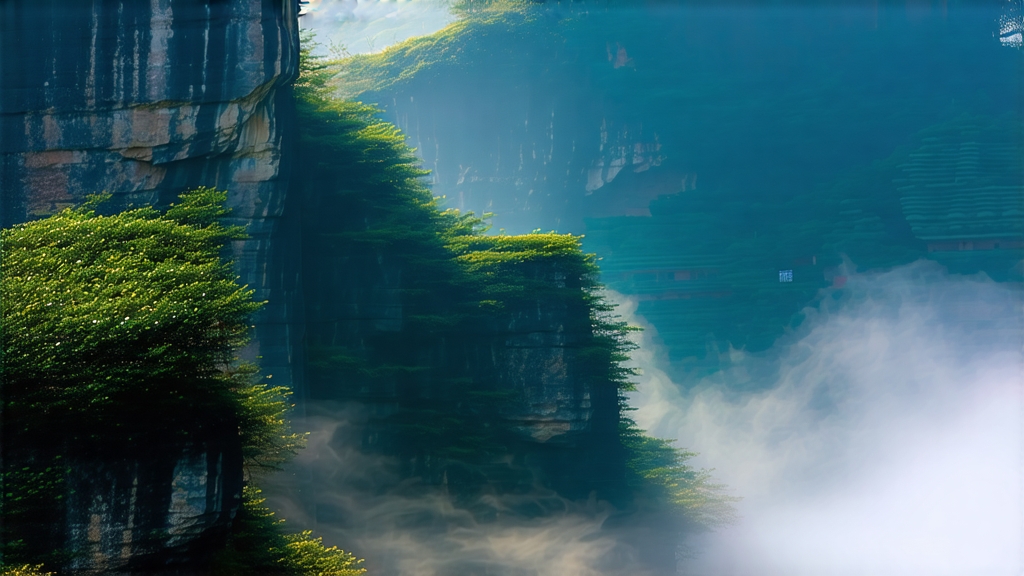
Few names in the vast lexicon of Chinese tea carry the mystique of Da Hong Pao—literally “Big Red Robe.” Grown on the vertiginous cliffs of northern Fujian’s Wuyi Mountains, this oolong is celebrated for its “rock rhyme” (yan yun), a stony minerality that lingers like the echo of a temple bell. To understand Da Hong Pao is to step into a world where myth, geology, and craftsmanship converge in every curled leaf.
Historical whispers place the birth of Da Hong Pao in the late Ming dynasty. The most beloved legend tells of a scholar who, while journeying to the capital for imperial examinations, fell gravely ill near the Wuyi cliffs. Monks from the nearby Tianxin Temple brewed leaves plucked from six ancient bushes clinging to the rocky crevices; the scholar was cured, passed the exams with top honors, and returned in gratitude, draping his crimson imperial robe over the bushes to honor their life-saving power. Whether fact or folklore, the image of that scarlet cloth has draped the tea ever since, giving it both its name and its aura of reverence.
Today “Da Hong Pao” is used in three distinct tiers. The rarest is “mother-tree” tea, harvested only once from the original six bushes nestled in Jiulongke (Nine-Dragon Nest) until commercial picking ceased in 2006 for conservation. A single gram once sold for more than the price of gold at auction. The second tier, “pure-specimen” or qizhong, is clonally propagated from cuttings of those mother trees, preserving their genetic fingerprint while allowing sustainable production. The third and most accessible is “blended” Da Hong Pao, a skillful marriage of leaves from several Wuyi cultivars—often Rou Gui, Shui Xian, and Bei Dou—engineered by master blenders to approximate the fragrance, body, and yan yun of the legendary original.
Geology is the silent co-author of flavor. The Wuyi range is a UNESCO geopark where volcanic tuff has weathered into sandy, mineral-rich soils that drain instantly yet retain trace metals. Day-night temperature swings of 15 °C force the tea bushes to thicken their cell walls, concentrating aromatic compounds. Constant cloud-fog filters sunlight into soft, diffused rays, prompting slow synthesis of amino acids and polyphenols. The result is a leaf that carries the taste of wet stone, orchid, and roasted apricot in one seamless arc.
Crafting Da Hong Pao is a choreography of fire, hand, and time. Picking occurs in late April when three half-mature leaves and a bud form the ideal pluck. The leaves are first withered under the mountain sun for thirty minutes, then moved onto bamboo racks indoors where warm air blown from charcoal pits reduces moisture to 60 %. This sun-wither “shakes green,” as growers call it, initiates enzymatic oxidation that will later be halted at precisely 30–40 %. Next comes yao qing—rhythmic tossing in wicker drums—for ten minutes every hour through the cool night. The bruising ruptures cell walls, allowing ambient oxygen to tease out floral precursors while the leaves edge toward a bronze-green iridescence.
Oxidation is arrested in a 230 °C wok for eight minutes, a step locals poetically term “killing the green.” Hand-rolling follows, curling the leaves into the tight, dark stripes that resemble dragon whiskers. But the soul of Wuyi oolong is its charcoal roasting. Using only local hardwoods, the tea is baked in shallow bamboo sieves suspended inside brick ovens. A first “foot-fire” at 120 °C lasts two hours; after a month of rest the tea is re-fired at 90 °C, then rested again. Some premium lots endure three cycles across half a year, each lowering the temperature and lengthening the bake until the moisture content sits just below 5 %. During aging the charcoal recedes into the background, allowing hidden fruit and floral notes to emerge—much as a violin opens up after years of play.
To brew Da Hong Pao well is to respect its mountain origin. Begin with spring water whose total dissolved solids sit between 30–80 ppm; hard water dulls the cliff-born minerality, while distilled water leaves the liquor flat. Pre-heat a 120 ml gaiwan or small Yixing teapot made